Argon/Krypton Gas insulation
I recently started researching windows and was wondering how much of a difference it would make to have argon gas or argon/krypton gases or just air between the panes. I live in a moderate climate.
I'd also like to know how well do the gases keep their insulation value? I mean, do the gases escape? If I spent more money on windows with the gases, would it be a waste of money in a couple years? Would significant rainfall affect the windows' ability to keep their seal, thus allowing whatever's between the panes to escape?
Comments (49)
skydawggy
16 years agolast modified: 9 years agoI'd go with argon if you live in a moderate climate. All windows lose some amount of gas over time, but not all windows lose gas equally. It depends on the type of spacer the window has and what is used to seal it. If you get a good quality window with Super Spacer or TPS, the amount of gas loss is minimal.
Understand that Low E coatings and gasses perform 2 different functions. Both are important. Low E glass reflects direct infrared heat but some of the heat is absorbed into the glass and can transfer across the space between 2 panes of glass more readily without gasses. The gasses are much heavier than air and therefore provide insulation between the panes of glass. Argon and Krypton are also important in the winter because they slow the amount of heat transfer from inside your house to the outside much more effectively than air alone.
calbay03
16 years agolast modified: 9 years agoAdding to the more technical post earlier, our own experience shows argon (that's all we have) gas makes a noticeable difference.
We have a bank of argon-filled windows facing the SW getting direct sun. While the low-E cuts the heat felt on my skin, the gas keeps the inner glass relatively cool to the touch when outside temperature climbs into 100+. While it is not cold, it was not quite body temperature either and felt cool to back of my hand.
In contrast, we have an older air-filled window completely shaded by a large oak. Even without direct sunlight, we can readily feel the warm on the inner glass as temperature rises outside. When it gets to 100+ outside, the inner glass is noticeably warm to the touch. Heat is definitely making it through the air space.
I have no direct experience with gas leaking, at least not yet.
Related Professionals
Castro Valley Window Contractors · Alexandria Window Contractors · Compton Window Contractors · Lakewood Window Contractors · Laurel Window Contractors · Snoqualmie Window Contractors · Dayton Window Contractors · Sterling Window Contractors · Linthicum Window Contractors · Middle Island Interior Designers & Decorators · Redding General Contractors · Waipahu General Contractors · Jamaica Plain Carpenters · Mountain Home Carpenters · Salisbury Carpentersantonio_2008
16 years agolast modified: 9 years agoConsider an argon/nitrogen blend. Nitrogen along with the argon helps keep the glass from deflecting and concaving in the center which reduces insulation value. Nitrogen becoming more popular for retaining the inside pressures as it is used in racing car tires and also keeps Commercial jetliners landing gear from exploding in mid-air due to the higher altitude. Andersen Windows now use this Argon/Nitrogen blend in all of their series 400 windows and Renewal products.
doberman_2007
16 years agolast modified: 9 years agoI recently installed tripple panes with krypton - argon and imediately noticed , on the east side of our home.When the sun beats in the window it cut the solar heat.It is like night and day,two rooms by 10am were a hot box turned into a livable space. I also noticed utility bills were a bit lower. New windows are not a cure all , air sealing helped just as much...
jake_2008
16 years agolast modified: 9 years agoArgon, what a joke. Low-e glass is a film put on the inside of the glass, but Argon is a gas. It will leak out over time. I have been in the lumber business for several years. Most manufactures will admit that the gas will leak out over time, but they make it sound very minimal. I have had a few honest window manufacturer reps from several different companies tell me that there is no guarantee how long with will last. Most of the honest ones agree that there is a good chance that within a few years all of the gas will have escaped the window, some have even stated that there is a slite chance that by the time the windows are installed there may not be any argon gas left in the windows.
Argon, such a good theory, and a nice way for window manufactures to make an extra couple of bucks.
oberon476
16 years agolast modified: 9 years agojake,
Just a bit curious as to who are the "honest" window manufacturers who have revealed the deep, dark, dirty secret that all the "dishonest" window manufacturers are trying so hard to hide, to you personally?
jake_2008
16 years agolast modified: 9 years agooberon, never said that the others are "dishonest" did I, so please don't get definsive. But they have all been national vinyl window manufactures that all make a very good product.
tru_blue
16 years agolast modified: 9 years agoJake I'm afraid you're operating under bad information. If a vinyl window manufacturer tells you that "there is a good chance that within a few years all of the gas will have escaped the window," then they make a pretty crummy window. Run away from them! There are many types of sealants potentially used to seal Argon gas into a unit, such as polyisolbutylene, polysulfide, butyl, and silicone. Some are better than others and they have their various longevities. Back in the 80s many units were single sealed with one type of sealant only and I suppose there are a few out there who still do that. Nowdays the spacers and sealants are designed with gas retention in mind. Dual seal insulating glass uses two types of sealants, one for structural and one for superior gas retention. There's also edge deleted methods (trimming the Low E off the edge of the glass where the glass is sealed to the spacer) and non-edge deleted methods (which results in an inferior seal and a shorter life of the glass) to not only keep gas in but to insure the longevity of the insulating glass itself. It sounds like the vinyl windows you're acustomed to might be on the low end for longevity, but almost every brand of wood and vinyl windows I'm aware of has an excellent gas retention. You can expect the gas to leak out at about 1% per year if done right. (I've heard that if done poorly it would leak at up to 8% per year, but I don't know of any company that uses those methods anymore). By the time the gas would be significantly gone (let's say 50 years), the glass would have presumably failed anyway by then; insulating glass is not designed to last forever.
If it is 0 outside and 70° inside, clear insulating glass is approx. 44° center-of-glass temperature on the roomside of the glass. Low E kicks up the glass temperature to about 52°, and the addition of Argon gas raises the temperature to about 57°. If Argon leaks out, air does not leak in to replace the Argon. Therefore if the Argon all leaked out, there would be such a severe vacuum between the glass that the two panes would bow inward and touch, or the insulating glass seal would be forced to fail and the seal would be breached. I've never heard an industry professional state before that all of the gas leaks out; I find it somewhat amusing and disturbing at the same time.
Perhaps what the vinyl window guy told you was motivated by this: many vinyl windows with Low E but without Argon gas still barely meet northern climate EnergyStar requirements. Wood windows often need both the Argon and Low E to exceed EnergyStar requirements. If you can convince someone that windows shouldn't have Argon gas and you still need to meet EnergyStar north climate requirements, then you would have to go with vinyl (or fiberglass). I deal with vinyl and wood and fiberglass windows, and in a northern climate no matter what material was chosen I'd ALWAYS go with Argon gas unless it was for a garage or shed.
I appreciate that you've been in the lumber business for several years. I've been in the window industry for 30 years. Oberon has been around a long time too; he's actually a glass expert. If it wasn't already his job, I think he'd test glass and seals for a hobby ;-) But really, if given a choice between Argon or no Argon, it would be a no brainer for me to select the Argon gas in cold climates. It will keep working for you for the entire life of the insulating glass, with with some loss but minimal loss of performance over the years (assuming it's a reputable window company that uses the right materials and methods to seal the glass instead of the 1970s/80s single seal methods/materials).
skydawggy
16 years agolast modified: 9 years agoI'm curious too. Who are these "honest manufacturers" that admit there is a slite (sic) chance the argon gas will be gone before the windows are installed?
What manufacturers "agree" there's a good chance the argon gas will be gone in a few years?
oberon476
16 years agolast modified: 9 years agoActually Tru_blu, during my last pay raise negotiation, I did suggest to my boss that at what he paid me I was basically doing this as a hobby (meant in good humor of course, because you may be right! lol)...anyway, he was glad that I enjoyed doing it so much that I would...you get the idea!
jake, my reply to your post was not defensive since I took no offense at what you said; but it was meant to tweak you a little for your comments.
A bit of unsolicited advice. I would suggest never coming into a new site and on your very first post slamming something about which you have somewhat limited ("I have been told") knowledge.
Opening with something as potentially inflammatory as "Argon, what a joke." is almost always going to guarantee that you will get replies, but perhaps not always what you may want to see. And using phrases (several times) such as "a few honest..." will also get you noticed.
When posting online you should always anticipate that there will be someone, often several someones, who may know A LOT more about a particular subject than you do. And while this may be nothing more than experience, that doesn't make it less true.
If you want to come in offering an opinion, which is certainly always welcome, I would probably recommend keeping your comments low key at the start and you may find that folks will be be more inclined to listen to you and even be helpful rather than defensive or responding in kind...and you may even find that you will learn something.
Agin, simply unsolicited advice, so take it or leave it for whatever it is worth. And you may recall being told at some time that communication is 10% talking and 90% listening...I find that to be very good advice (although like almost every one of us, I find it hard to do sometimes!)
And in the case of LowE coatings, argon fill, spacer systems, window materials, installation practices, etc. Those two guys who posted after I did know A LOT about those areas. Quite possibly more than those folks from the window companies that you have met in your time at the lumber yard. Remember that the folks that you meet have as their number one motivation convincing you to sell their product over their competetor's product.
If you would truly like to learn more about the specifics of window and/or glass and/or IG systems, feel free to ask.
doberman_2007
16 years agolast modified: 9 years agoI was going to remove the windows and leave openings for fresh air , but the wife didnt see it that way LOL.The trick to purchasing windows is do your homework. It is mind boggling the number of manufacturers out there .I went with a locally owned company who backs up warranty issues, they use superspacer in the window and have patent many ideas. I must admit they are a very heavy window , when you clean them tilted in you better hang on . I already broke one and it was fixed no questions asked.
kari8793
16 years agolast modified: 9 years agowow, all this window info is very interesting. My husband and I are building this summer. We are fearful of buying windows and not being happy later...my friend said her Dad bought a window with Krypton in it and they miss the sun light. Does that sound wierd. He used to have an old bow window that was all wood and now it's a vinly one with Krypton I guess. I don't know what that is? She said that it's much much warmer in there and it does bring down the heat bill, but that they don't get the big sun glare in that the cat used to lay in...and they liked that but are happy the heat bills are less. Well we're thinking about going Low-e with window but will we loose that direct sunlight? We have tons of south facing windows, which is great in wisconsin. Would we be better to just use sun shades in the summer so we can keep the direct sun light in the winter? Thanks!
skydawggy
16 years agolast modified: 9 years agokari
There is no difference in Visible Light Transmittance between air, krypton and argon gas. What can affect the VT is whether the IG is double or triple pane, and the number of layers of Low E coatings, and whether the window has grids or not. Iirc a single pane window with a storm has a Vt of .78 and a double pane with Low E glass and argon/krypton has a center of glass VT of .71
Overall VT is going to depend on the style and brand of window you choose.
You might be better off looking for a window that offeres a Hard Coat low E as it will provide a higher SHGC (heat gain) in the winter.
Sometimes, to gain greater energy efficiency there are certain trade-offs. Personally, I'd buy a heating pad for the cat to lie on as a trade-off for lower utility bills.
skydawggy
16 years agolast modified: 9 years agoJust to add to what Oberon said. The difference in heating and cooling costs in Madison, WI between a double pane with a high SHGC/high U factor and a triple pane with a low SHGC/low U factor is about $600 per year. Based on a 2000sf house with approx 20 average size windows.
oberon476
16 years agolast modified: 9 years agoand to add to what both skydawggy and I said earlier (this stuff can get really confusing!):
Keeping in mind that a low U-factor is a good thing, and U-value is inverse of R-value, so that while a higher R-value indicates higher resistance to thermal transmittance, a lower U-value number indicates how well heat travels thru a material. Lower U-value number - less heat passes thru it.
Since U-value in windows is referred to as U-factor, I will use U-factor for the rest of this post since we are considering windows.
So in a window system, a U-30 is better than a U-50 and a U-15 is better than a U-30. This is true no matter where you live. In the north, in winter, you want to keep your heat inside your home. In the southland, or northland (summer), you primarily want to keep outside heat outside of your home. A window system with a low U-factor works both ways. It helps to keep heat in when it is cold outside and it helps to keep heat out when it is hot outside.
Solar Heat Gain Coefficient, or SHGC, is a little different. SHGC is a number between 0 and 1. The higher the number, the more direct solar heat will pass thru a window. A higher SHGC number is good when you want to benefit from solar heat (in winter of course). It is not so good when you live somewhere where cooling is your primary interest, or when it is a bright, sunny, hot summer day, no matter where you live (although it is possible to design or retrofit a home in that case - but that is beyond the scope of this post...). If you live in Miami, you want the lowest SHGC number that you can find. If you live in International Falls, then you consider heating a heack of a lot more important than cooling!
If you want maximum solar heat gain thru a window, then you want to use a window with the highest SHGC number that you can find. A dual pane window made with clear glass will have a SHGC number of about .76 or so - and this is very high. This means that the glass will pass about 76% of the solar heat that is "available" on that window.
But, the trade off when using clear glass is that a very significant amount of that solar heat gain is going back out again as soon as the temperature of the glass is below the temperature of the room air - and it isn't just heat generated by the "solar heat gain". Any heat that you generate in your home is looking for a way to go outside where it is colder - nature likes balance and a warm inside and cold outside isn't in balance - nature wnats to correct such discrepancies.
A clear glass dual pane window has a U-factor right around .5, which is poor. To look at it as an R-value, it would be an R-value of 2.
So in Wisconsin, if you want to maximize your solar heat gain potential, would be a south-facing window with a high SHGC number and a low U-factor number.
Unfortunately, there are trade-offs. Current technology can get you a window with ahigh SHGC number (high solar gain potential) and moderate to poor U-factor, or it can get you a low (remember low number is good when discussing U-factor) U-factor with a low to medium SHGC number.
To recap:
if you want to limit ALL heat sources thru a window (winter and summer), then you want a low SHGC number and a low U-factor.
if you want maximum solar heat gain but also maximum energy efficiency, then you need a window with a high SHGC number and alow U-factor.
if you are only interested in maximum solar heat gain and (and as a consequence) are willing to accept maximum heat loss thru the window, then a window made with clear glass (no LowE coating) will work.
chandler_2008
16 years agolast modified: 9 years agoHow about a combination of Argon and Krypton gas? Does it work better than Krypton or Argon alone? Has anyone heard about the performance of Republic Windows. They use a combination of these gases. The energy performance ratings as told by the sales person are U-Factor - 0.22, Visible Transmittance - 0.51 and SHGC - 0.31. I am currently paying around $450 for the gas bills and want to change all the windows just to reduce the gas bills. Will these really help? I currently have a 30 yr old house with single pane glass windows.
skydawggy
16 years agolast modified: 9 years agoAlthough Republic claims their windows are NFRC rated, they aren't listed. That usually indicates that whatever test numbers a manuf. claims, is based on their own in-house tests. Just assuming for a second their numbers are accurate the .22 U-factor is a Center Of Glass rating. Compare that to PPG Solarban-60 which has a .22 C.O.G. Summer U-factor,a .25 C.O.G Winter U-factor, a .39 SHGC, and a.71 VT and only uses argon.
Iirc Republic currently only offers Intercept Spacer with their windows. Going with a window that uses Super Spacer with argon gas will reduce the U-factor by .02.
As a general rule, there isn't much gain in energy efficiency between argon and krypton gas when used in a 3/4", 7/8", and 1" spacer with double paned glass. The big gain in energy efficiency with krypton is when used with triple pane glass with a 1/4" space between each pane.
chandler_2008
16 years agolast modified: 9 years agoIn general what is the performance of the Republic windows. I saw some notes in another forum by some people that the window seal in Republic windows comes off after 5-6 years. They say that they use Hot-Melt Butyl Sealant a highly flexible material able to maintain an airtigght seal even in extreme conditions. The salesperson said Republic has taken care of most of the issues that people have seen in the past. Sales Tricks.........Can someone else let me know their experience so far with the Republic windows. I have signed a contract with but I still have couple of days to cancel it.
The dealer "The Window Guys" has given me a quote of 11000 for 25 double hung windows with double pane, single strength glass, grids included in 20 of the windows. The window size is 18 are - 37x51, 4 are - 25x51, 3 are 37x39. Is it a fair quote. I received a quote from Home Depot for Simonton 6500 series wndows of around 18000. Which is way too high. Just want to make sure the windows I am getting are good quality and their performance does not degrade soon. Please help me decide.kari8793
16 years agolast modified: 9 years agoTHank you so much for all this infromation. I'm going to print everything out and have my husband look at it. We've been really confused and I'm so glad there's people out there educated in all these window options available out there. We bought our land from a seller of Vinly Pro Windows, so we sort of have to buy those or Lindsey (he sells those too now). He knows a lot about windows, but we didn't really follow what he was saying about low E he was recommending and different Low E on the north that holds heat in better? But they seem like really good windows from what I've heard (www.vinylprowindows.com). They come with double glass and then a storm spaced apart so I think they have an R value of like 4? Ever heard of them? I guess with all that glass it sounds like we'll lose some light no matter what? Our patio door will be double paned glass with a second glass slider working as a storm in the winter too. I've never seen windows like this elsewhere, but my mom has them in her house and her heat bills are low. I can't tell much about the sun light because she's got houses so close to her. Our big thing is the sun light, we really like as much bright sun as possible through the Wisconsin winters. Thank you so much for all your help and I really hope my husband understands a little better than I do. Thanks! Kari
skydawggy
16 years agolast modified: 9 years agoKari
First of all, there are many good local window manuf.
I am unfamiliar with Vinyl-Pro Windows so I won't make any comments about them other than to tell you their site provides no detailed information about their windows and they are not independently rated for energy efficiency. I'd ask a few questions like what type of balance system they use in the windows, what the wall thickness of the vinyl is, what the OVERALL U-factor is, Visible Transmitance, and Solar Heat Gain Coefficient. Keep in mind that just having Low E and argon gas is no guarantee of an energy efficient window.
I would also stongly advise you to get a couple of estimates on other windows and compare the energy efficiency and construction to the Vinyl-Pro Windows. I'd also compare warranties as the Vinyl-Pro is one of the weakest I've seen.
kari8793
16 years agolast modified: 9 years agoYeah they don't have much on the web site. Hum, surprised you didn't think much of the warranty. I don't know what most window companies offer? I guess it's only as good as the company standing behind it? I've seen this company replace a window for free in a home. I don't remember what happened but one windows had a problem so they just came out and put in a new one. So I think that's good enough for us. My Mom has the windows in her home and her heat bills are really low campared to other peoples in the area. They have a double pane and then approx. 3-4 inches spaced out between that and the storm, so it leaves a nice air space and the storms are nice and tight. She has a few crank out windows too and the storms pop into the inside for the winter, but have not quite as big of a gap. A contracter thought they were unique. I really appreciate all of this great feed back. My husband read and underlined a lot of what was said and plans to order I think a certain coating that Oberon talked about. Thank you all so much, that was very generous for ya'll to take the time to help us out!
chandler_2008
16 years agolast modified: 9 years agoAre double pane windows with Krypton/Argon gas inside good enough to make the Windows sound proof or three pane windows with Krypton/Argon inside will be the only solution. My house backs a highway. With the current single pane + storm windows its really noisy.
skydawggy
16 years agolast modified: 9 years agoArgon and krypton gas do not provide any sound deading qualities. Nor is there any real difference in sound transmission between double and triple pane glass. The only way you will get any noticeable and measurable reduction in sound is to opt for laminated glass.
perseus
15 years agolast modified: 9 years agoI bought a picture window over a year ago which has argon gas between the panes. Every spring and fall the outside of the window fogs up and the two side windows do not. Is this normal? The manufacturer insists that this is normal. If it is normal, why would I want windows that I can not see out of for half the day?
oberon476
15 years agolast modified: 9 years agoperseus,
A window with external condensation is normal when the conditions are right. It means that the window is blocking heat from inside your home from passing thru the glass to the outside - this is a good thing.
You tend to see this in the spring and fall when the temperatures are changing and humidity varies all over the place.
kamason
14 years agolast modified: 9 years agoWe have a two year old house with unfilled, double paned windows. We seem to have a lot of problems with humidity building up on them especially in the winter. Understanding, our winters are less than cordial and spend a lot of time around -35C and below, I am wondering whether ice build up half way up the windows is 'normal'? Sometimes this ice is up to an inch thick in places. I have asked around & been given answers like "new home humidity" (which Google doesn't seem to know anything about) to the very patronizing "well, it is cold outside!" I purchased a humidity monitor which seemed to indicate that there wasn't anything amiss there - about 45% most of the time. Does anyone have any advice or insight (other than moving to a warmer place?) ;-)
oberon476
14 years agolast modified: 9 years agoYou say "unfilled" windows - do you know if your windows have a LowE coating?
kamason
14 years agolast modified: 9 years agoI don't know for sure, but the glass has a bit of a colour to it, so I think it probably does have a coating.
oberon476
14 years agolast modified: 9 years agokamason,
I asked about coating because in simplest terms in order to eliminate condensation on your windows, you have to get the glass temperature above the dew point of the air that is in close contact with the glass. A LowE coating is the number one contributor to warmer glass.
I am including a rather long explaination that I wrote concerning dew point and RH and condensation. Reading it will probably result in more questions than it answers, but it gives a bit of background.
You have interior condensation on your windows simply because the surface temperature of the window is below the dew point temperature of the air in your homethats ita very simple explanation.
Unfortunately, as to why the surface temperature of your window (glass) is below the dew point temperature of the air in your home may be a bit more complex so I am going to offer a few thoughts and maybe even throw in a few numbers that I hope might help your situation.
In the summer, when you pull something cold and refreshing out of the refrigerator, and the air is warm and humid, that cold and refreshing beverage container suddenly and quite magically becomes instantly wet just as soon as it is exposed to the air. What has happened is that the temperature of the container fresh from the refrigerator is below the dew point temperature of the air which has caused condensation on the outside of that container.
What happens to your windows in the fall and winter is that the surface of the glass is below the dew point temperature of the air in your home which is causing condensation on the surface of that glass.
Dew point is defined as saturation vapor density...or put in simpler terms, when the air reaches 100% relative humidity and can hold no more moisture.
Relative humidity is, well, relative.
Relative humidity is a comparison of the actual vapor density versus the saturation vapor density at a particular temperature. Put a bit more simply, dew point is 100% relative humidity or the point where the air - at that temperature - is no longer able to hold any more moisture. If the air has reached vapor saturation (100% relative humidity), then the air will release moisture...be it on the outside of that cold beverage container in the summer time, or be it on the interior glass surface of your windows in the winter time, it makes no difference. If the surface temperature happens to be below freezing, then that moisture becomes frost or even ice.
In order to stop condensation from forming on the surface of a window, you either have to lower the dew point temperature of the air in your home to a level below the dew point temperature of the window surface, or you have to warm up the window surface to a temperature above the dew point temperature of your home, or a combination of both.
Lowering the relative humidity of the air in a home may have absolutely no effect on controlling window condensation or it may completely solve condensation problems, depending on how the relative humidity was lowered and what affect the "how" has on both the moisture level of the air and the temperature of the windows. All this because there are two ways to lower relative humidity first you can increase the air temperature or second you can decrease the moisture content of the air both decrease relative humidity, but they are not the same.
By increasing the air temperature in your home you will lower the relative humidity but you will not change the dew point which is based on the amount of water vapor in the air and is not based on the temperature of the air. So, while the RH is lower with higher air temperature, it may not effect condensation on window surfaces at all unless the rise in air temperature also caused a corresponding rise in window glass temperature to a level above the dew point temperature.
But, lowering the amount of water vapor or moisture in your air will lower the dew point temperature as well. And if it lowers the dew point temperature sufficiently to drop it below the temperature of your window glass no more condensation issues.
The amount of moisture in the air is measured in grams per cubic meter, which is kind of nice for our metric folks but not so nice for our non-metric folks; but the metric version is much easier on the calculator than the English version. However, in the interest of making this stuff easier to understand for all of us non-metric types, I am going to use Fahrenheit rather than Celsius temperatures in the calculations.
Okay consider your home at 65 degrees F and with a relative humidity reading of 40%. There are 6.25 grams of water in a cubic meter of air in your home in that particular scenario - which then equates to a dew point temperature of 38 degrees F. So at 38 degrees the air will be at 100% relative humidity or at saturation vapor density.
Now, if your neighbor keeps her house at 75 degrees, but she also has 6.25 grams of water per cubic meter in her air, then the relative humidity in her home is 29% - versus your 40%. But, and heres the kicker, the dew point temperature in her home is still 38 degrees.
While the relative humidity in her home is much lower than is the relative humidity in yours; if the surface temperature of the windows in her home is 35 degrees she will have condensation on those windowsyet if the surface temperature of your windows is 40 degrees only five degrees warmer you will not have condensation on your windows.
So, while her handy humidity gauge reads (correctly) only 29% RH she has a condensation problem.
While your handy humidity gauge reads (correctly) 40% RH you dont have a condensation problemSWEETwell, for you anyway, not her.If your home hygrometer measures the relative humidity in your home at 60% while the temperature of your home is 70 degrees, you will have a dew point temperature of about 51 degrees meaning that if the temperature of the window surface is below 51 degrees then you will have condensation - so now we talk a little more specifically about windows.
The interior surface temperature of a single lite of glass, when the temperature outside is 0 degrees F and the inside air temperature is 70 degrees, will be about 16 degrees.
Add a storm window on the outside and the surface temperature of the inside lite jumps up to about 43 degrees a huge improvement.
But these are center-of-glass readings and not the temperature readings at the edge of the window where condensation usually forms. A typical clear glass dual pane window is going to have center-of-glass temperature reading pretty much the same as a single pane with a storm however, if that dual pane has a LowE coating and an argon gas infill then the center-of-glass temperature will be about 57 degrees a 14 degree improvement over a clear glass dual pane or a single pane with storm window but again, and more importantly, there will be a comparable edge of glass improvement as well, particularly if the IGU (Insulating Glass Unit) was manufactured using a warm edge spacer system. Also, the dual pane is going to have desiccant between the glass layers. Desiccant absorbs moisture keeping the inside of the dual pane system very dry.The advantage? If it gets cold enough outside, the temperature in the airspace between the lites can get very low. By keeping that space dry, it helps to keep the dew point temperature very low as well; something not always possible when using a single pane and storm window.
Oddly enough, a single pane with a good and tight frame and sash assembly may be more prone to condensation than will a less tight single pane window simply because air (and moisture) will leak out of the looser window while the tighter window may be more likely to trap the moisture inside the home. And, while a tight storm window can help the interior lite to avoid condensation (when compared with a single lite and no storm), the storm window itself may frost up when the temperature is low enough at a temperature usually well above the temperature that will cause the dual pane to ice up. It is unavoidable given the right circumstances
So what does a window temperature of 57 degrees mean? Well, as I mentioned earlier a home kept at 70 degrees with a 60% relative humidity has a dew point temperature of 51 degrees so it is much less likely that there will be condensation problem on those particular windows than there would be with a less energy efficient window - despite the relatively high relative humidity in the home.
But, there is always a "but"
Again, that 57 degree glass temperature is still a center-of-glass reading and the edge of glass temperature will be lower - actual temperature is dependent on both the spacer system used in the IG unit construction and on the material used to construct the sash. So even with a "57 degree" center-of-glass temperature it is still possible to get window condensation if there is enough moisture in the air.
And consider that the interior glass temperatures are based on the fact that moving, warmer, indoor air is actually in contact with the glass at a given time. Curtains, shades, other obstructions can cause problems by blocking airflow across the glass airflow that can have a huge effect on the condition of the window relating to condensation. Also, bay and bow windows can be more prone to condensation again because of the possibility of decreased airflow over the glass.
And finally, what can happen to the dew point if you keep your home at 70 degrees and you have a 65% relative humidity? Well, for one thing the dew point has jumped up to 57 degrees which we have already noted is the same as the window temperature. For another thing, anyone with 65% relative humidity in a home at 70 degrees has way too much moisture in their air and they are in serious need of some sort of ventilation system or at least several good exhaust fans!
kamason
14 years agolast modified: 9 years agoOberon, Thank you for taking the time to explain all of that. It did indeed bring up some more questions, but at least this time they are relatively informed questions as opposed to "what's up with that?" You also explained why, on those weeks where the humidity outside was ridiculously low, the windows fogged up every time I turned the oven on :-)
I appreciate the information immensely.jeffcoleman11_gmail_com
12 years agolast modified: 9 years agodose the argon gas work on thiner cavity ie 6mm as can only fit 14mm units
Windows on Washington Ltd
12 years agolast modified: 9 years agoArgon works regardless of the cavity size, however, it effectiveness is lessened in the smaller air spaces. In air spaces smaller than the 10mm, krypton is more effective.
brickeyee
12 years agolast modified: 9 years ago"Commercial jetliners landing gear from exploding in mid-air due to the higher altitude."
What the gas is will have no affect on the gauge pressure and force placed on the tires.
It is the lack of oxygen that could support a fire that is desired.
At altitude the oxygen is pretty low.
Why bring high pressure tires filled with 21% oxygen that could support fire in the rubber of the tires?
The nitrogen fill in vehicle tires is not nearly as important as the fact there is no water vapor.
Even if you use the exact gas ideal gas constant for the composition of the atmosphere the water vapor is what causes most of the variation.
hollygrant
11 years agolast modified: 9 years agoI have a foggy look between the glass on my double pane windows and I'm sure it's because the seals are failing. Is this typically covered under warranty?
HomeSealed
11 years agolast modified: 9 years agoDepends on how old and what manufacturer, but yes there is typically SOME warranty coverage on that.
Windows on Washington Ltd
11 years agolast modified: 9 years ago+1
Most good manufacturers will have a 20 year glass warranty these days. I hope it is covered for you.
millworkman
11 years agolast modified: 9 years agoWith most window companies they will give you the glass and having it changed will be on your dime though after a certain length of time.
hollygrant
11 years agolast modified: 9 years agoWindowsonwashington do you by chance live in WA State? We are the original owners of the home and nowhere on any paperwork can we find info on who made the windows. The windows are almost 15 years old and all are in great shape except for 2. I hope they're covered and if I have to pay to install glass, that's better than paying for it all! Thanks for your input everyone. I'll let you know how this turns out.
Windows on Washington Ltd
11 years agolast modified: 9 years agoNegatory.
We are in the center of corruption of the US...good ole DC.
millworkman
11 years agolast modified: 9 years ago15 years I doubt the glass will be covered as at that time most everyone I am aware with the execption of Andersen was at 10 yrs for seal failure.
window_mike
11 years agolast modified: 9 years agoYou get slightly lower U Values with Krypton over Argon but you would have to live very long to recoup the extra cost.
swmotz
11 years agolast modified: 9 years agoI find the discussion on Low-E glass extremely informative. However, I have to admit I had difficulty completely understanding the discussion concerning condensation on Low-E glass.
So, my question is this: If you have one window with double pane glass with a U-Factopr of .25 and an SHGC of 42% and you have another window that is double pane clear glass, both using the same kind of frame and they are both experiencing the same indoor/outdoor temperature and the same indoor/outdoor humdity, will the Low-E glass get condensation before the clear glass would?
Windows on Washington Ltd
11 years agolast modified: 9 years agoNo.
Other way around.
The Low-e equip window (assuming it is interior, soft-coat Low-e and on surface 3) will keep a higher surface temperature on the interior (inside facing piece of glass) and therefore tolerate higher humidity levels before forming condensation.
swmotz
11 years agolast modified: 9 years agoWhat happens if the soft-coat low-e is on surface 2? In fact, I thought that's where the soft-coat typically went, surface 2. Will it tolerate higher humidity levels than clear glass?
oberon476
11 years agolast modified: 9 years agoswmotz,
Condensation forms on any surface when the surface temperature is below the dew point temperature.
Dew point is based on the level of moisture in the air.
Assume two identical windows, except that one window has LowE glass - either surface 2 or surface 3 - and the other window has clear, non-coated glass.
If it's zero degrees F outside and 70 degrees F inside the clear glass dual pane IG unit will have a center-of-glass temperature of about 16 degrees F and the dual pane with LowE coating will have a center-of-glass temperature of about 42 degrees F (as WoW noted, a surface 3 coating may result in slightly warmer interior glass temp than will a surface 2 coated IGU).
In any case, if the dew point temp is 30 degrees then the clear glass dual pane IGU without LowE coating will form condensation on the interior or number 4 surface of the glass and the dual pane IGU with the LowE coating will not form condensation.
Now if you are asking about exterior condensation on the window (glass surface 1), then that is a different situation.
In that case the window with the LowE coated glass will be more likely to have exterior condensation because the LowE coating will be blocking radiant heat loss from the home keeping the exterior glass surface cooler - potentially below the dew point.
what_now
10 years agolast modified: 9 years agoBuilding a house in middle TN. I want to make sure I have this correct.
Would best advice for west windows be to limit ALL heat sources thru a window (winter and summer) (a low SHGC number and a low U-factor) and south, east and north to have maximum solar heat gain but also maximum energy efficiency (a window with a high SHGC number and alow U-factor)?
Generally we have fairly mild winters (usually lows not lower then 20, except this year, for 2-3 months) and moderately hot summers for 2-3 months. Rest of year is fairly moderate. Heat is generally all electric heat pump due to cheap electric rates here. But they can struggle or require use of expensive heat strips when temps drop below 30.Average high/low
Dec 50/31
Jan 47/28
July 89/70
Aug 89/68http://www.weather.com/weather/wxclimatology/monthly/USTN0357
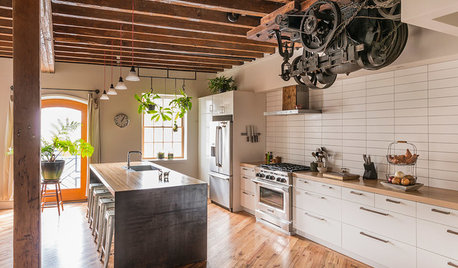
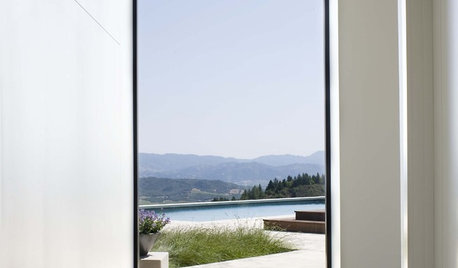
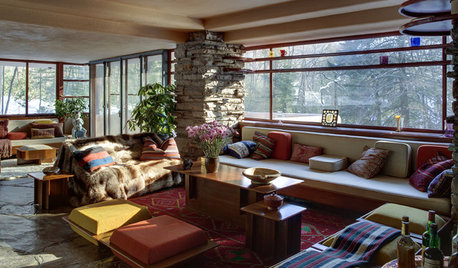
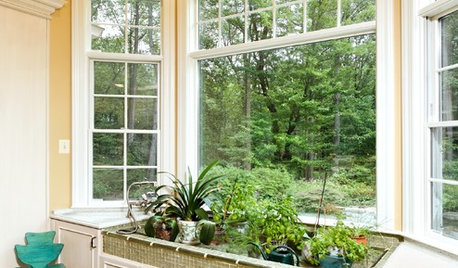


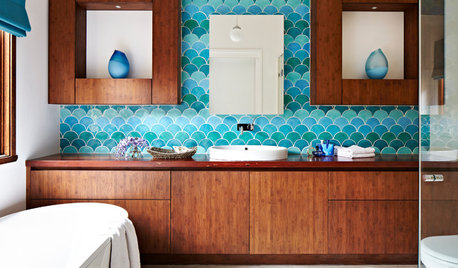
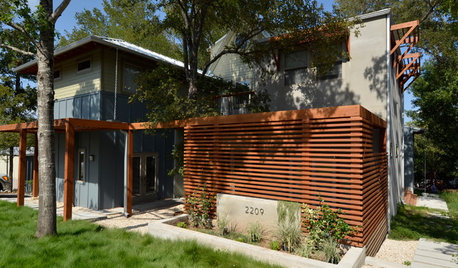
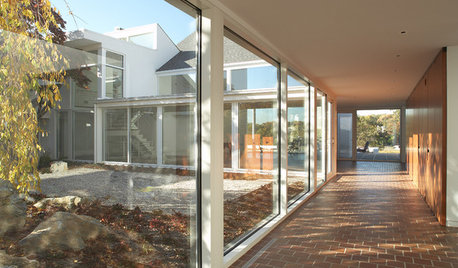







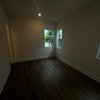

oberon476